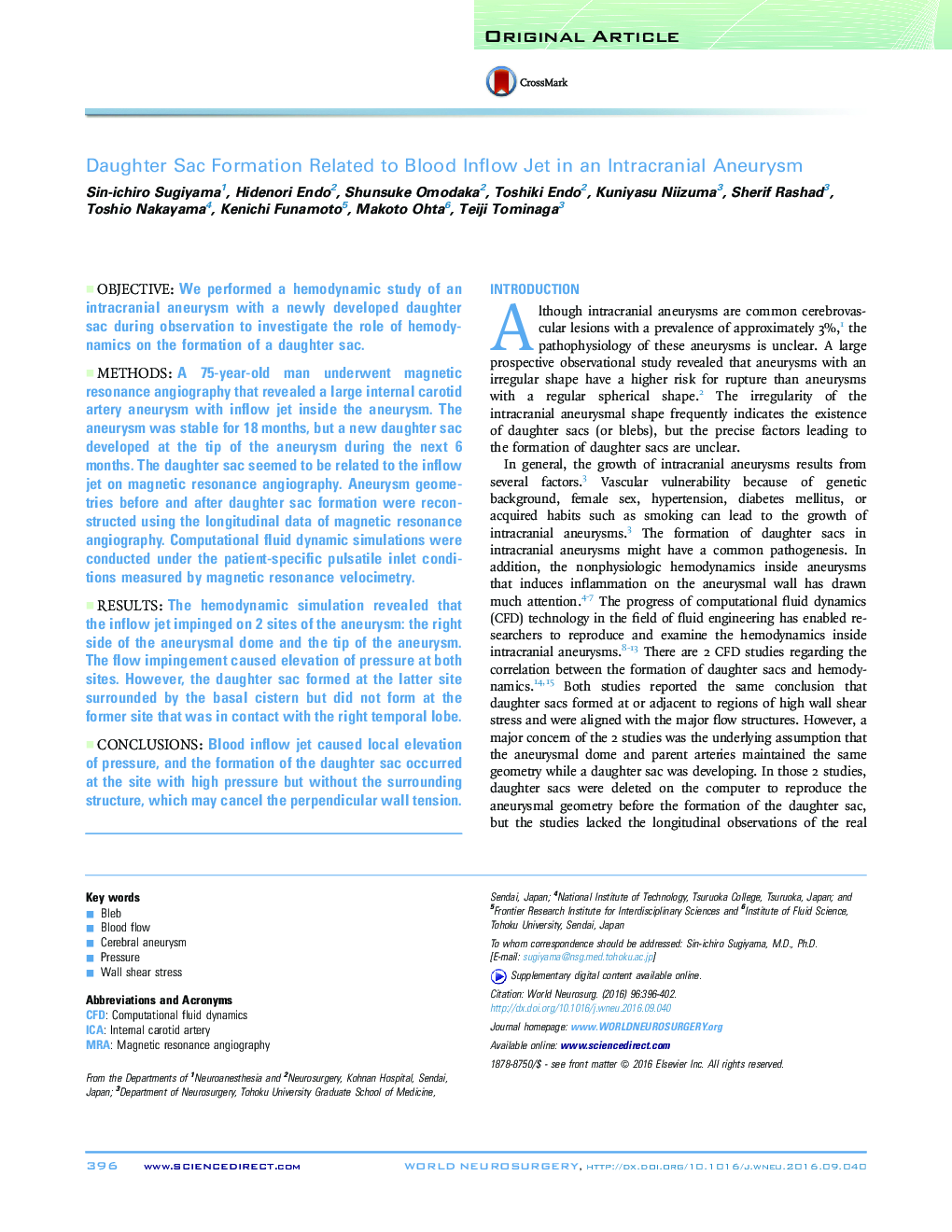| Article ID | Journal | Published Year | Pages | File Type |
|---|---|---|---|---|
| 5635047 | World Neurosurgery | 2016 | 7 Pages |
ObjectiveWe performed a hemodynamic study of an intracranial aneurysm with a newly developed daughter sac during observation to investigate the role of hemodynamics on the formation of a daughter sac.MethodsA 75-year-old man underwent magnetic resonance angiography that revealed a large internal carotid artery aneurysm with inflow jet inside the aneurysm. The aneurysm was stable for 18 months, but a new daughter sac developed at the tip of the aneurysm during the next 6 months. The daughter sac seemed to be related to the inflow jet on magnetic resonance angiography. Aneurysm geometries before and after daughter sac formation were reconstructed using the longitudinal data of magnetic resonance angiography. Computational fluid dynamic simulations were conducted under the patient-specific pulsatile inlet conditions measured by magnetic resonance velocimetry.ResultsThe hemodynamic simulation revealed that the inflow jet impinged on 2 sites of the aneurysm: the right side of the aneurysmal dome and the tip of the aneurysm. The flow impingement caused elevation of pressure at both sites. However, the daughter sac formed at the latter site surrounded by the basal cistern but did not form at the former site that was in contact with the right temporal lobe.ConclusionsBlood inflow jet caused local elevation of pressure, and the formation of the daughter sac occurred at the site with high pressure but without the surrounding structure, which may cancel the perpendicular wall tension.
